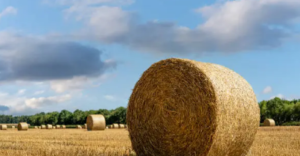Baling twine is an innovative product with multiple advantages, making it perfect for baling hay. Constructed from natural fibres, baling twine offers an eco-friendly alternative to plastic products that may damage our planet.
 Baling twine should be cleaned to provide nesting materials to Ospreys and other wildlife and reduce landfill waste and pollution. Doing this also helps decrease landfill waste and pollution levels.
Baling twine should be cleaned to provide nesting materials to Ospreys and other wildlife and reduce landfill waste and pollution. Doing this also helps decrease landfill waste and pollution levels.
It’s made of natural fibre.
Baling twine for sale near me is used to compress hay or straw bales into manageable round bales for easier transportation and storage, often made of natural or synthetic fibres such as sisal; today, however, polypropylene has become the more sustainable and cost-effective material of choice for making baling twine.
Farmers often struggle to find sustainable ways of recycling or disposing of twine. If it is not handled appropriately, improper disposal could cause environmental harm by entangling wildlife and polluting soil and water supplies; additionally, trip hazards and entangled farm equipment pose considerable threats to animals and humans.
There are many creative uses for twine. For instance, someone with patience and resourcefulness could use it to craft plant holders or macrame plant hangers; use it as a makeshift dog lead rein or hold open the door on a horse trailer, tie down tarps; use it instead of purse straps – the possibilities are limitless!
It’s strong
Baling twine is a strong yet flexible twine used to bind fibres together. Highly resistant to weather elements and with guaranteed length per pack, baling twine enables you to get more hay out of your baler while saving money over time.
Bailing twine is available in both jute and polypropylene varieties, offering farmers who prioritise being environmentally friendly several strong options to reduce landfill waste or release toxic chemicals into the air or soil. Furthermore, both materials are biodegradable without needing to be burned off later, making them perfect for decreasing their carbon footprint.
It’s durable
Bailing twine is a durable cord used to bind hay bales together. It comes in both natural and synthetic varieties; natural twine is made of sisal, making it biodegradable and digestible – it makes an excellent alternative to poly twine in square baler machinery and comes in various colours that have been treated against rodents.
Twine is one of the best choices for binding a hay bale; net wrap and wire are other popular options. Although wire may take up less space in an office environment than twine, twine offers greater durability while taking up less operational space than its alternatives; its reuse also makes it a cost-effective alternative to products such as hay bags.
It’s flexible
Baling twine is manufactured from synthetic materials such as polypropylene. Compared with sisal, polypropylene twine offers much greater flexibility and strength – ideal for use in larger hay or other materials – while remaining highly resistant to wear and tear and boasting excellent knot-holding capability.
Baling twine is made by melting raw material, shaping it through extrusion, then cooling it with refrigerated rollers before conditioning and tempered to improve softness and handling before winding it onto a coil and packaged ready for commercialisation.
The tensile strength of baling twine refers to the maximum force it can withstand before breaking and plays an essential role when selecting twine for use in baling jobs. Note that this does not consider knotting ability, which must be assessed separately.
It’s eco-friendly
Baling twine is an eco-friendly choice and helps reduce landfill waste without using toxic materials or harmful chemicals that would compromise its safety for use in farming and agricultural operations. Biodegradable, it does not contribute to environmental damage either – making this type of twine ideal for hay baling as it ensures tightly packed bales with secure connections.
Polypropylene baler twine can also be recycled and collected through a specialist waste handler or your usual recycling centre and sent directly to schools or art centres for reuse in creative projects.